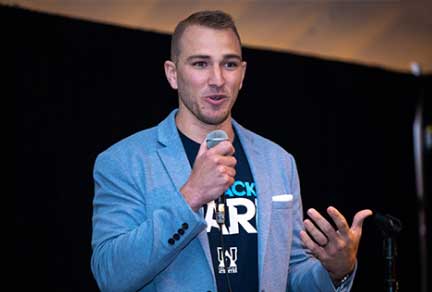Optimize trial retention: Targeted strategies to engage patients
This article is part of Parexel's "Navigating to 2030" playbook series on differentiating next-generation obesity therapies. This series offers strategic insights across trial design, regulatory considerations, clinical operations, and patient retention strategies to support sponsors in this rapidly evolving and competitive market.
Home Section 1 Section 2 Section 3 Section 4 Section 5
Retaining patients in obesity trials can be a challenge, especially for those in the placebo arm who are not experiencing weight loss and for those in the active GLP-1 arm experiencing side effects during dose escalations. Since a high rate of study discontinuations could impact a trial’s primary efficacy endpoint, usually the percent change in weight loss, we advise sponsors to employ strategies that mitigate that risk. For example, sponsors can enroll a larger number of patients from the start to minimize the effects of drop-outs during the trial.
Respect the patient experience.
Obese and overweight patients often feel stigmatized by society and healthcare providers, so the language in clinical trial communications is important. For example, our patient advisors suggest replacing the word “diet” with “eating plan,” “nutrition,” or “food intake” in study materials. Site staff should be trained to communicate with patients using non-judgmental and supportive language. Even the basic ergonomics of a site can be off-putting: Are the doors wide enough to accommodate a wheelchair? How far away is the parking lot?
Navigating the procedures and terrain of a clinical trial can be emotionally fraught for obese patients, and especially so for pediatric patients and their parents. If a patient’s entire family engages in eating habits at odds with the trial protocol, children and adolescents can feel singled out—just as adults may. Trial personnel should approach the family as a unit and encourage them all to support the patient’s participation in the trial.
Provide financial, emotional, and informational support to patients.
Current approved obesity medications require lifestyle modifications, including lower caloric intake and increased physical activity, which have often proven too difficult for patients to comply with. Sponsors must add up the costs of these changes and consider providing financial support during the study for healthy groceries to meet nutritional goals or gym discounts to encourage exercise. Sponsors can use personal appreciation items such as a water bottle, yoga mat, gym towel, recipes, pedometer, milestone charms or tokens, and thank you cards to engage patients at key points during a trial.
We recently optimized a Phase 2 obesity trial by asking our patient advisory panel to review the schedule of visits and other study burdens. They suggested creating visit-by-visit printed and electronic guides to explain the study schedule to patients and what would happen at each site visit. This enabled us to prepare the materials well in advance of study initiation and optimize protocol compliance.
Another effective strategy is providing on-site or remote social-emotional support from trained disordered-eating therapists. This can be delivered locally as a centralized service or if a site has an existing facility (such as an in-house therapist).
Educate about the benefits of study participation.
Retaining patients who are not losing weight and might suspect that they are taking a placebo is a core challenge of obesity trials. Sponsors must try to prevent these patients from dropping out. Attending site visits and completing e-diary entries is not as compelling for patients not experiencing benefits. To proactively address this issue, we advise site staff to invest in patient education at the outset. Patients who are fully informed about the aims and methods of clinical research are more motivated to complete trials.
It is essential to remind study participants, including those in the placebo arm, of the many benefits they will receive from an obesity trial. Placebo-arm patients will have frequent contact with nurses and PIs during site visits and receive the same quality of personalized diet and exercise counseling as active-arm patients. They will receive clinical care and wellness benefits they might not otherwise have access to.
Additionally, trials with open-label extension studies can motivate placebo-arm patients to continue in the trial since they will eventually have a chance to receive a drug that might otherwise be unaffordable or unavailable.
Prioritize personal contact and relationships.
Outsourced or centralized support is not an adequate substitute for direct contact between patients and study staff in an obesity trial. For example, the titration period in which doses for GLP-1s slowly increase requires intense clinical trial monitoring and site and patient support. We are conducting a trial of an oral obesity drug in which participants report the severity of gastrointestinal (GI) symptoms in an e-diary. This allows the clinical trial team to closely monitor GI adverse events and contact sites with guidance for mitigating these symptoms and improving the patient experience in the study.
For trial participants experiencing mild to moderate nausea or vomiting, we have found that simple dietary strategies like eating smaller, more frequent, and low-fat meals, ensuring adequate hydration, and providing protein shakes and ginger chews can help alleviate symptoms. Providing tips on handling situations such as eating meals outside the home, portion control, and stress eating can also be valuable to patients. Sometimes, just the personal attention from a study nurse or PI talking through symptoms and challenges builds trust, which can be helpful to patients who may have felt judged by providers in prior healthcare interactions.
Sponsors should provide additional stipends for regular personal contact between study coordinators and patients. In some cases, a patient hotline or online navigation tool—available 24 hours a day, seven days a week—could help patients adhere to the trial protocol. We recommend providing dedicated patient retention support for obesity clinical trials. At Parexel, we have developed an obesity training course for our CRAs that covers dose titration, common adverse events management, imaging assessments and endpoints, patient pathways, and monitoring for adherence and compliance.
Provide detailed results at the end of the trial.
At Parexel, we have explored a retention strategy of providing clinical trial participants with their study results. After unblinding, sites could compile a personalized patient dossier that includes weight loss, body mass composition, and bloodwork values versus baseline. Most patients would appreciate this more than the standard thank-you note. It is not a significant budget item for sponsors. And, of course, only patients who remain in the trial until the end will get one.
Sign up for our webinar "Unlocking Success in Obesity Clinical Trials: Mastering Patient Engagement and Retention." Do not miss this opportunity to take a meaningful step toward smarter, more successful obesity trials.
Related Insights
Webinar
Unlocking Success in Obesity Clinical Trials: Mastering Patient Engagement and Retention
May 15, 2025
Whitepaper
Navigating to 2030: A playbook for differentiating next-generation obesity therapies
May 2, 2025
Whitepaper
Execute with precision: Streamline operations for rapid and reliable enrollment
May 1, 2025
Whitepaper
Anticipate regulatory expectations: Fill evidence gaps and mitigate risks
May 1, 2025
Whitepaper
Design for efficiency: Employ trial strategies to meet stakeholder needs
May 1, 2025
Playbook
Define your differentiators: Carve a unique niche in the market
May 1, 2025
Article
Key strategies to mitigate the risks of asthma drug development
Jan 24, 2025
Blog
Updated European Society of Cardiology guidelines: opportunities and risks for clinical trials
Jan 21, 2025
Podcast
Enabling Successful Sites, Episode 2: Empowering Sites to be More Inclusive Through Cultural Sensitivity Training
Jun 28, 2024
Blog
AI Milestones: AI-enabled EKG reads and alerts save lives: human-AI collaboration in practice
Jun 6, 2024
Related Insights
Webinar
Unlocking Success in Obesity Clinical Trials: Mastering Patient Engagement and Retention
May 15, 2025
Whitepaper
Navigating to 2030: A playbook for differentiating next-generation obesity therapies
May 2, 2025
Whitepaper
Execute with precision: Streamline operations for rapid and reliable enrollment
May 1, 2025
Whitepaper
Anticipate regulatory expectations: Fill evidence gaps and mitigate risks
May 1, 2025
Whitepaper
Design for efficiency: Employ trial strategies to meet stakeholder needs
May 1, 2025
Playbook
Define your differentiators: Carve a unique niche in the market
May 1, 2025
Article
Key strategies to mitigate the risks of asthma drug development
Jan 24, 2025
Blog
Updated European Society of Cardiology guidelines: opportunities and risks for clinical trials
Jan 21, 2025
Podcast
Enabling Successful Sites, Episode 2: Empowering Sites to be More Inclusive Through Cultural Sensitivity Training
Jun 28, 2024
Blog
AI Milestones: AI-enabled EKG reads and alerts save lives: human-AI collaboration in practice
Jun 6, 2024



